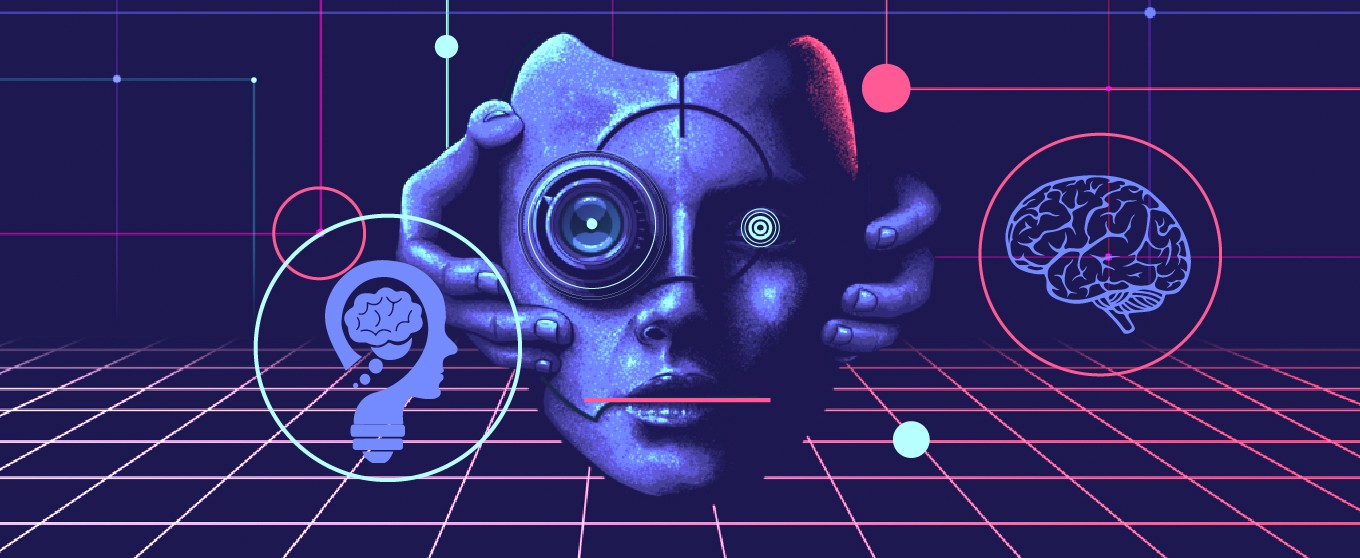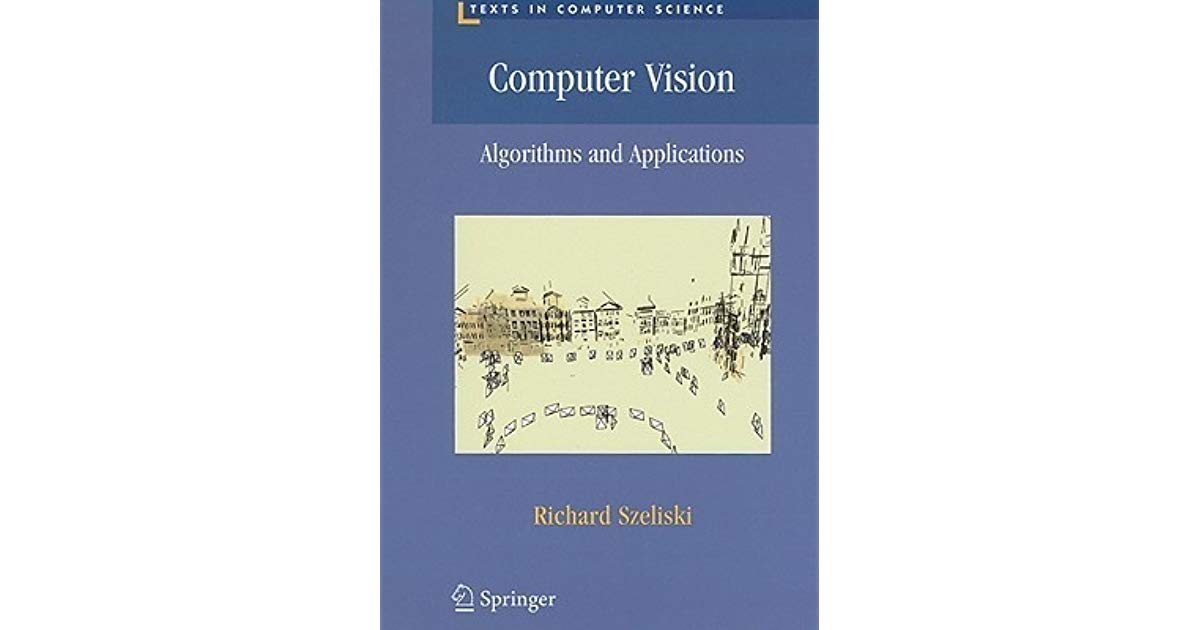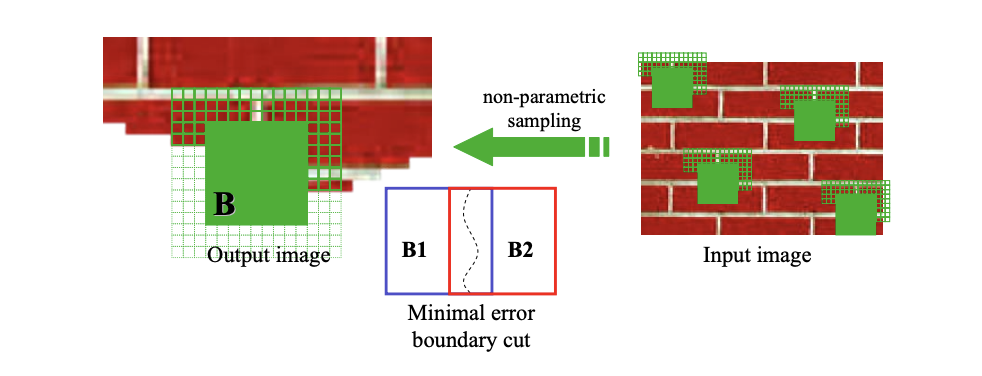Mastering Computer Vision - 8 Basic Steps
Hello reader.
For you, the fact that everyone has tried aging masks through the Face App is no longer news. In turn, for computer vision there are tasks more interesting than this. Below I will present 8 steps that will help you master the principles of computer vision.

')
Before starting with the steps, let's understand what tasks you and I can solve with the help of computer vision. Examples of tasks may include the following:
So, now let's get down to the steps.
This step is about the technical basics.
Check out this great YouTube playlist, The Ancient Secrets of Computer Vision, by Joseph Redmon.
Read the third chapter of Richard Sheliski's book Computer Vision: Algorithms and Applications.

Build knowledge - try yourself in image conversion using OpenCV. The site has many step-by-step electronic manuals , guided by which you can figure out everything.
An optical stream is a sequence of images of objects obtained by moving an observer or objects relative to a scene.
Take the course - a computer vision course at Udacity , especially lesson 6.
Take a look - the 8th video on the YouTube list and a lecture on optical flow and tracking.
Read - sections 10.5 and 8.4 of the Sheliski textbook.

As a training project, figure out how to use OpenCV to track an object in a video frame.
In computer vision, segmentation is the process of dividing a digital image into several segments (super pixels). The purpose of segmentation is to simplify and / or change the presentation of an image so that it is easier and easier to analyze.
So, the Hough transform allows you to find circles and lines.
Check out these videos:
Check out - an excellent project whose similar tasks are extremely important for the computer vision of self-driving electric vehicles.
Different data require a specific fitting approach and their own algorithms.
Watch the video:
Read - sections 4.3.2 and 5.1.1 of the Sheliski textbook.
As a task for independent work, analyze the problem of determining the coordinates of the place where the lines converge on the perspective horizon.
Check out the Youtube playlist
Read the cover letter.
For the project, you can take your own data. For example, take a picture of furniture from different sides and make a 3D object in OpenCV from an album of flat images.
Being able to create 3D objects from flat images, you can try to create three-dimensional reality.
Take - stereo vision and tracking course
Watch the video:
As a project, try to reconstruct the scene or track an object in three-dimensional space .
It’s convenient to use TensorFlow as a framework for deep learning. This is one of the most popular frameworks, so you can easily find enough examples. To get started with images in TensorFlow, go through this tutorial .
Further, using links, consider the following topics:
As a project, create a neural network in TensorFlow that determines the brand of a car or a breed of dog from an image .
Read - Stanford Course Lectures
Watch the video:
On this our steps in the study of computer vision came to an end. I hope you learned something new for yourself. As is customary on Habré, I liked the post - put a plus. Do not forget to share with colleagues. Also, if you have something that you can share yourself - write in the comments. More information about machine learning and Data Science on Habré and in the telegram channel Neuron (@neurondata).
All knowledge!
For you, the fact that everyone has tried aging masks through the Face App is no longer news. In turn, for computer vision there are tasks more interesting than this. Below I will present 8 steps that will help you master the principles of computer vision.

')
Before starting with the steps, let's understand what tasks you and I can solve with the help of computer vision. Examples of tasks may include the following:
- Image segmentation
- Object Detection
- Image classification
- Tracking moving objects in time
- Face recognition
- Optical character recognition
- Image generation
The minimum knowledge required to master computer vision
- Strong knowledge of Python syntax ;
- Mathematical analysis ;
- Linear algebra ;
- OpenCV Library
- TensorFlow Deep Learning Framework
So, now let's get down to the steps.
Step 1 - Basic Imaging Techniques
This step is about the technical basics.
Check out this great YouTube playlist, The Ancient Secrets of Computer Vision, by Joseph Redmon.
Read the third chapter of Richard Sheliski's book Computer Vision: Algorithms and Applications.

Build knowledge - try yourself in image conversion using OpenCV. The site has many step-by-step electronic manuals , guided by which you can figure out everything.
Step 2 - Motion Tracking and Optical Flow Analysis
An optical stream is a sequence of images of objects obtained by moving an observer or objects relative to a scene.
Take the course - a computer vision course at Udacity , especially lesson 6.
Take a look - the 8th video on the YouTube list and a lecture on optical flow and tracking.
Read - sections 10.5 and 8.4 of the Sheliski textbook.

As a training project, figure out how to use OpenCV to track an object in a video frame.
Step 3 - Basic Segmentation
In computer vision, segmentation is the process of dividing a digital image into several segments (super pixels). The purpose of segmentation is to simplify and / or change the presentation of an image so that it is easier and easier to analyze.
So, the Hough transform allows you to find circles and lines.
Check out these videos:
Check out - an excellent project whose similar tasks are extremely important for the computer vision of self-driving electric vehicles.
Step 4 - Fitting
Different data require a specific fitting approach and their own algorithms.
Watch the video:
Read - sections 4.3.2 and 5.1.1 of the Sheliski textbook.
As a task for independent work, analyze the problem of determining the coordinates of the place where the lines converge on the perspective horizon.
Step 5 - Combining images obtained from different points of inspection
Check out the Youtube playlist
Read the cover letter.
For the project, you can take your own data. For example, take a picture of furniture from different sides and make a 3D object in OpenCV from an album of flat images.
Step 6 - 3D Scenes
Being able to create 3D objects from flat images, you can try to create three-dimensional reality.
Take - stereo vision and tracking course
Watch the video:
As a project, try to reconstruct the scene or track an object in three-dimensional space .
Step 7 - Object Recognition and Image Classification
It’s convenient to use TensorFlow as a framework for deep learning. This is one of the most popular frameworks, so you can easily find enough examples. To get started with images in TensorFlow, go through this tutorial .
Further, using links, consider the following topics:
- Semantic segmentation : categorization of objects, scenes, activities
- Object detection ( non max suppression , sliding windows , bounding boxes and anchors , element counting)
- YOLO and Darknet , region proposal networks
- Controlled classification algorithms (teacher training)
- Visual attributes
- Optical character recognition
- Face detection
As a project, create a neural network in TensorFlow that determines the brand of a car or a breed of dog from an image .
Step 8 - Modern Deep Learning
Read - Stanford Course Lectures
Watch the video:
On this our steps in the study of computer vision came to an end. I hope you learned something new for yourself. As is customary on Habré, I liked the post - put a plus. Do not forget to share with colleagues. Also, if you have something that you can share yourself - write in the comments. More information about machine learning and Data Science on Habré and in the telegram channel Neuron (@neurondata).
All knowledge!
Source: https://habr.com/ru/post/461365/
All Articles